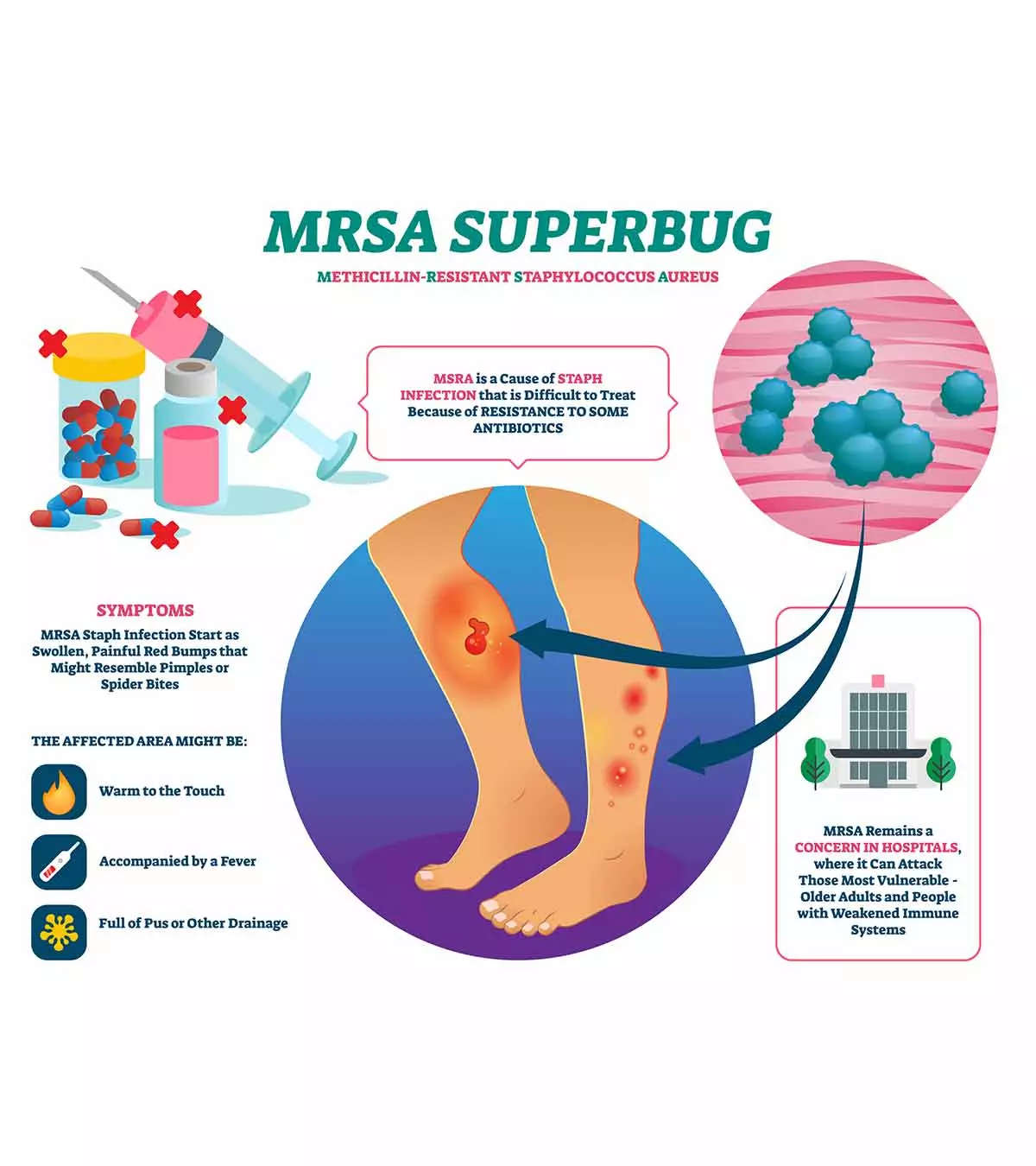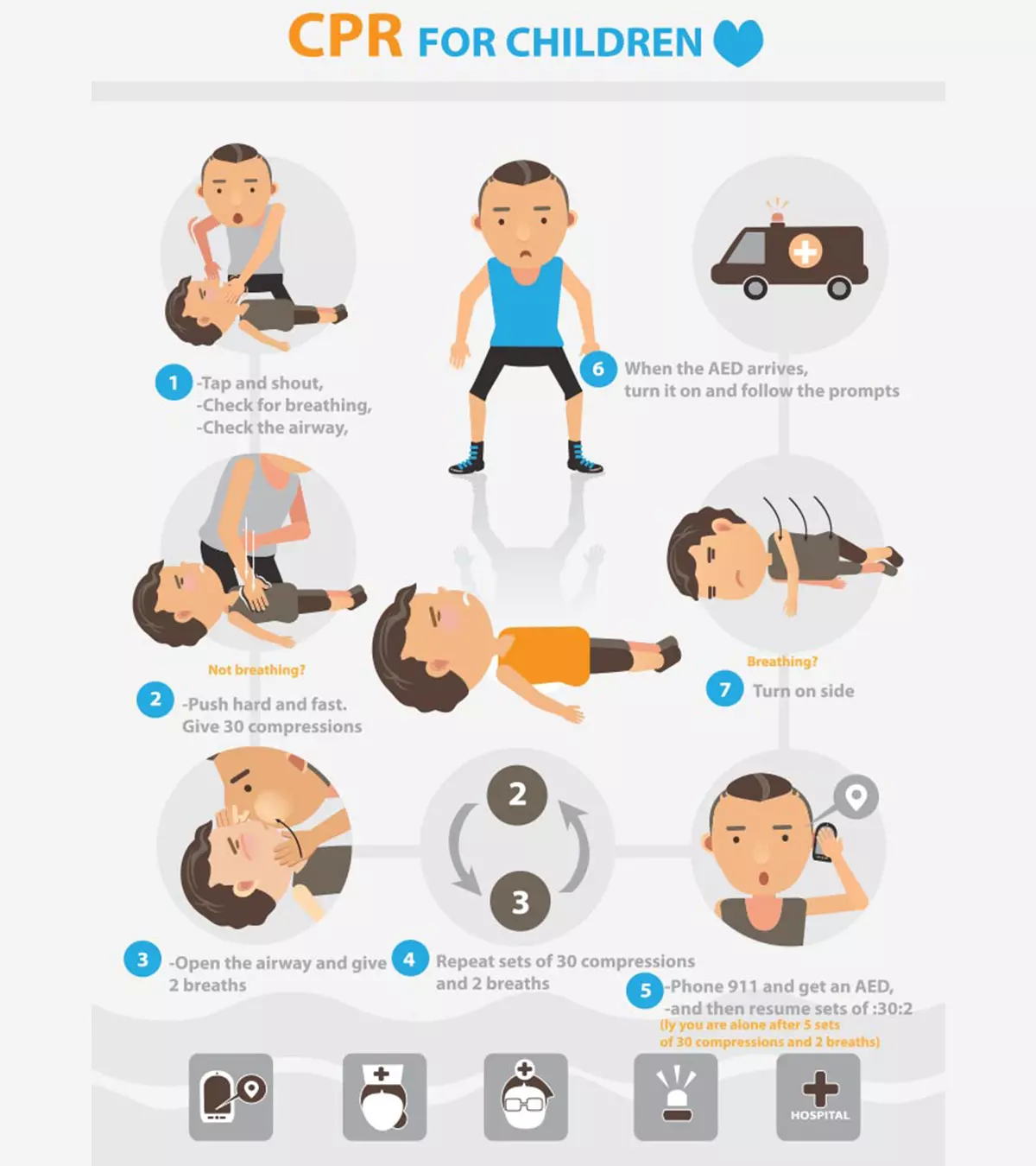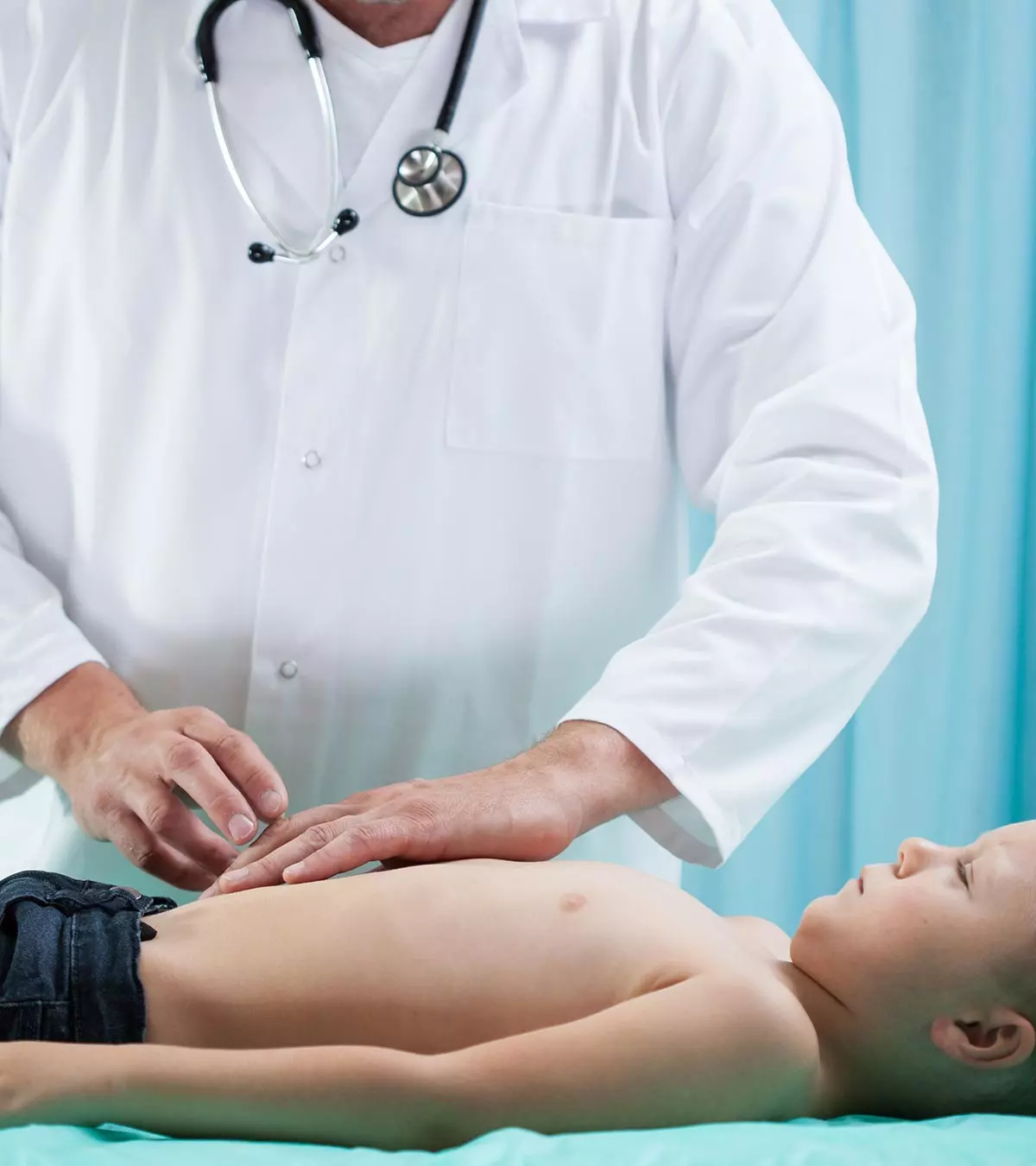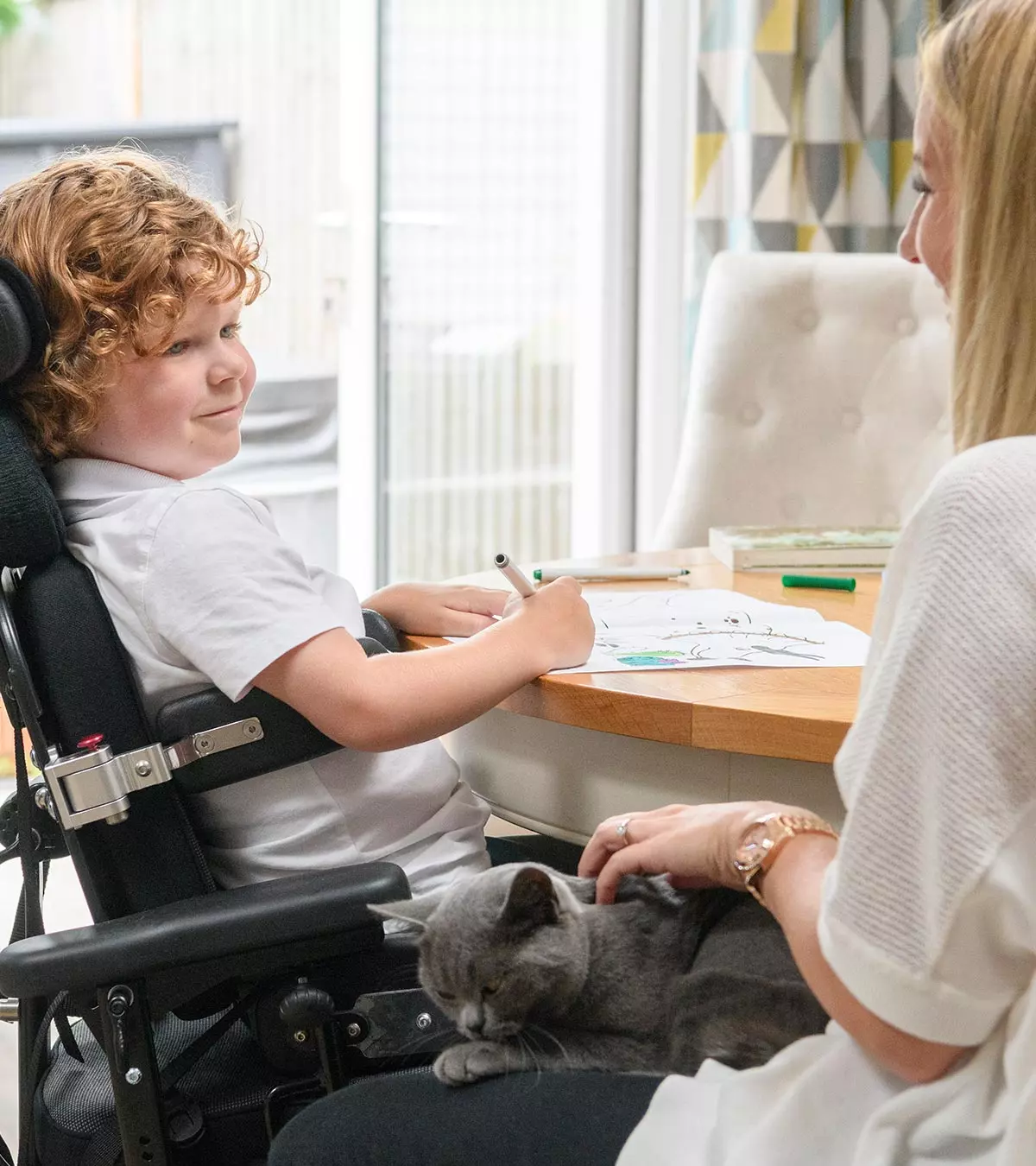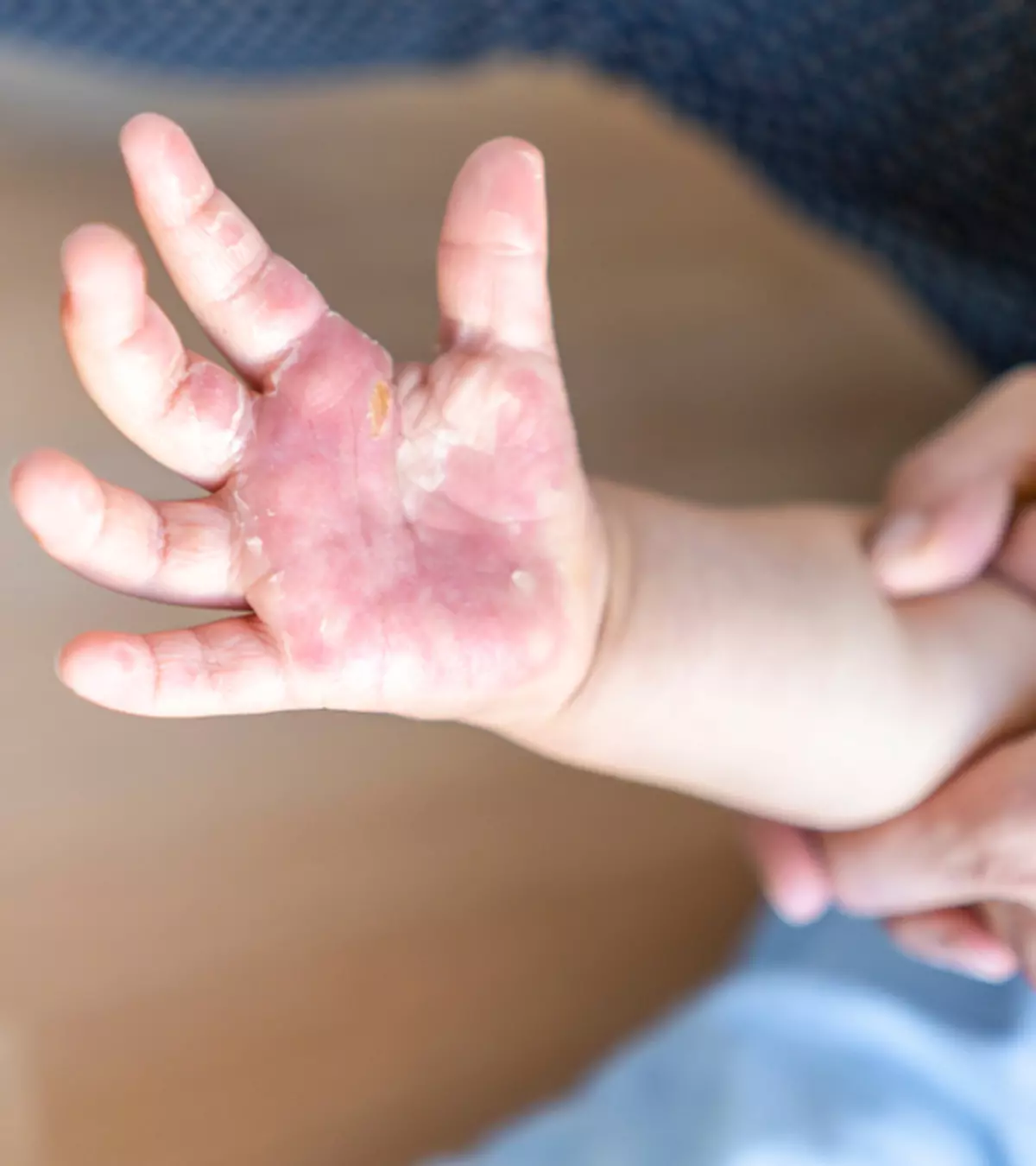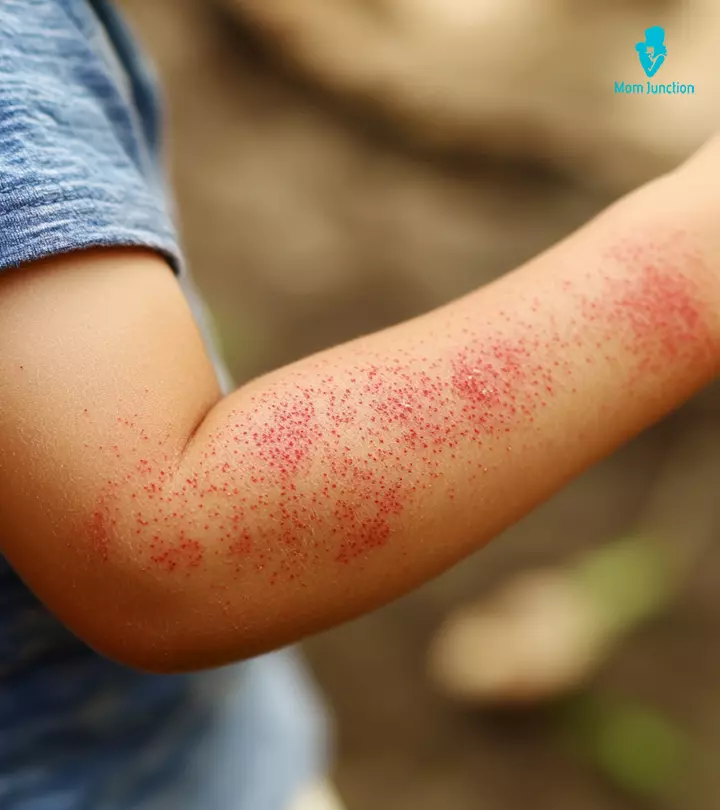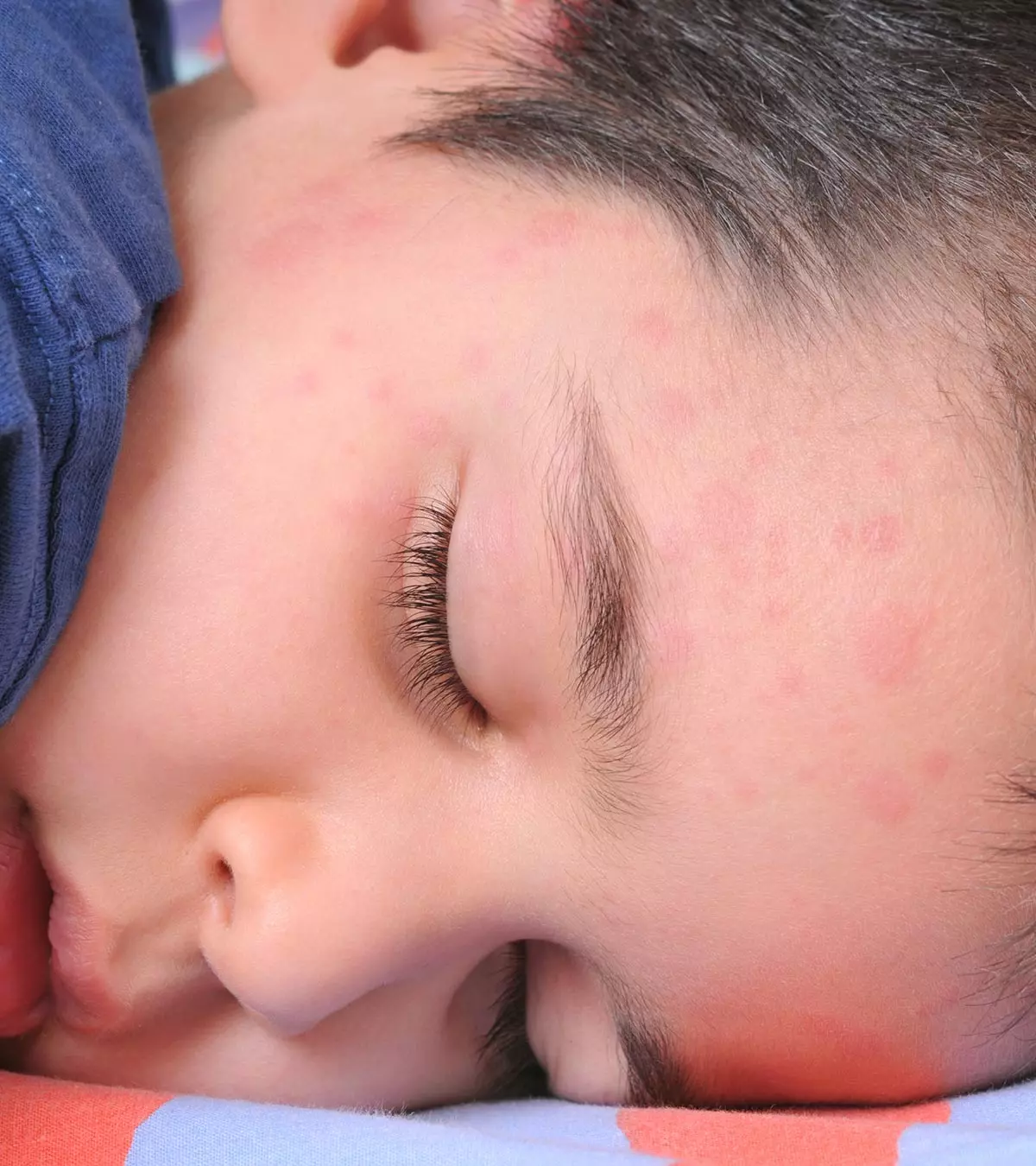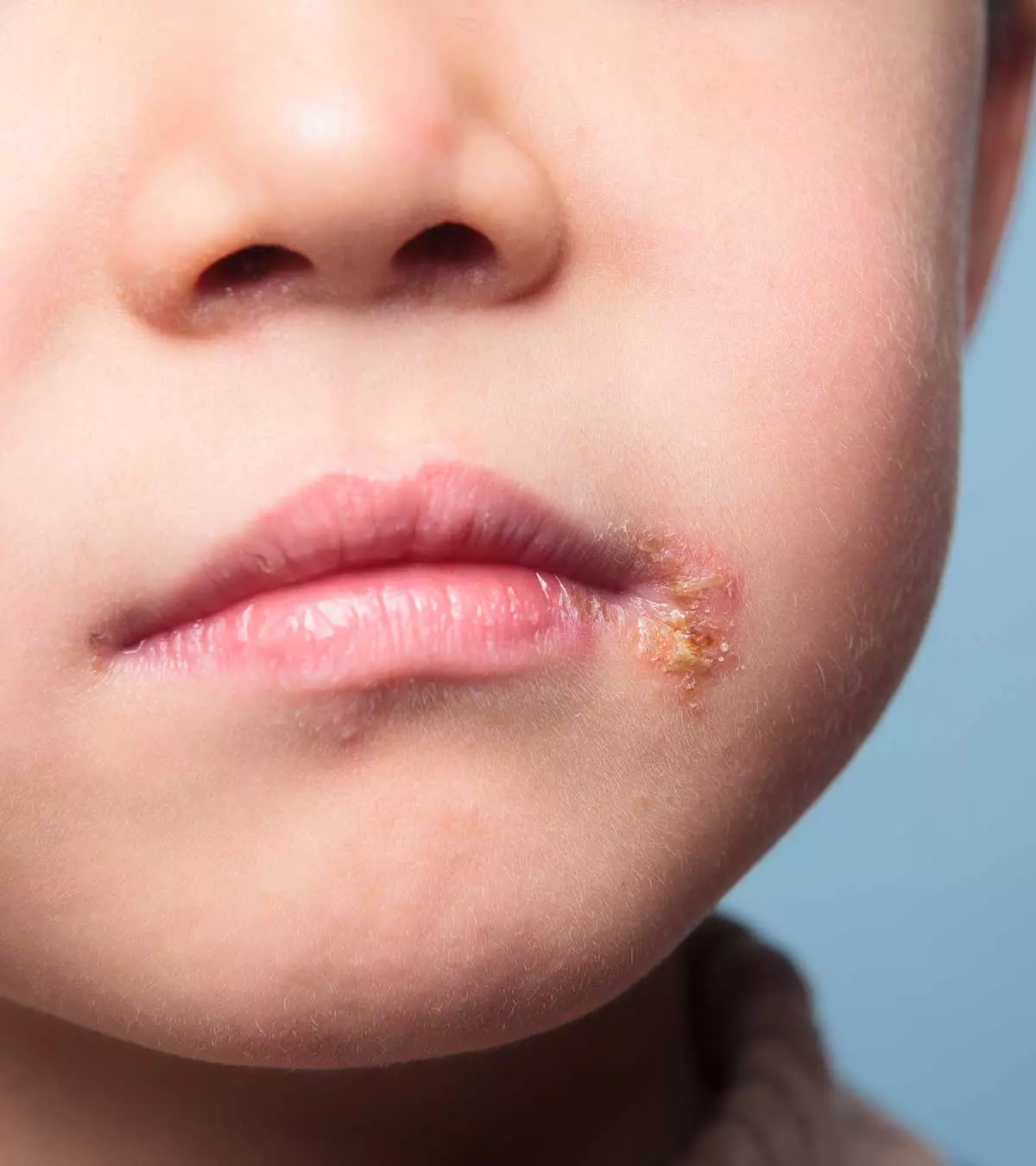
Image: Shutterstock
Hypotension or low blood pressure in children can be due to various reasons. This is when the systolic or top reading pressure goes below 90mmHg, and the diastolic pressure or the bottom reading is below 60mmHg (1). According to most pediatric care guidelines, these blood pressure measures are less than the 5th percentile for children aged ten years or more (2). However, the normal measurements may vary in younger children. So you may seek pediatricians’ help to determine hypotension in children. Read on to know more about the causes, symptoms, and management of low blood pressure in children.
Key Pointers
- Low blood pressure in children is defined as having a systolic pressure less than 90 mmHg and a diastolic pressure less than 60 mmHg.
- There are different types of low blood pressure in children, including orthostatic, neurally-mediated, and severe hypotension.
- Allergies, infections, anemia, and dehydration are some of the common causes of low blood pressure in children.
- Treatment options for low blood pressure may include staying hydrated, increasing salt intake, and maintaining an active lifestyle.
Types Of Low Blood Pressure (Hypotension) In Children
The threshold of blood pressure in adults is usually static. However, it differs in children based on their age, height, and gender percentile (2). Hypotension can be classified into four categories:
- Orthostatic hypotension: It happens when a child’s blood pressure falls when they are in a standing posture for a long time. They may have symptoms such as headache, weakness, and difficulty in vision (3).
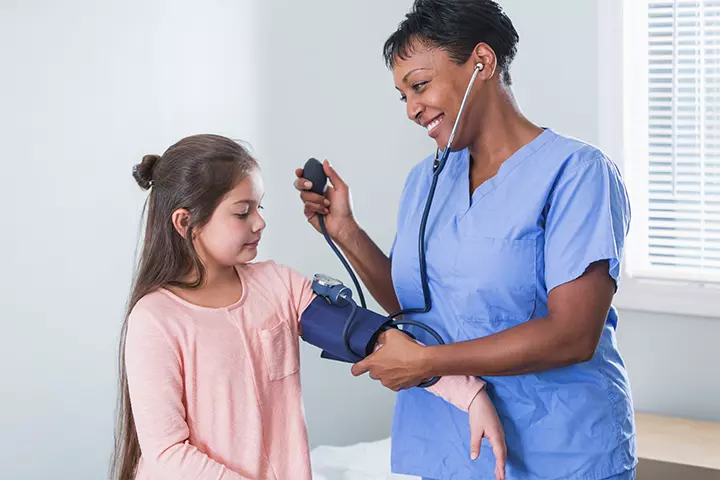
- Neurally mediated hypotension: Also known as syncope, or more commonly vasovagal syncope, it is caused when the brain and heart have an abnormal reflex interaction due to a glitch in the autonomous nervous system. It could occur when the child is in a warm surrounding, has been standing for long, after exercise, or after eating (4) (5). Neurally mediated syncope occurs when blood vessels widen and blood pressure drops, leading to a slower heart rate. This reduces blood flow to the brain and can cause fainting (6).
 Be watchful
Be watchful- Severe hypotension: It is a substantial drop in blood pressure due to severe infection, loss of excess blood, severe allergy, injury, or trauma (7).
Low blood pressure in children could be caused due to various factors or could be the result of a condition or an event.
Causes Of Low Blood Pressure In Children
A report by the American Academy of pediatrics states, “∼40% of people faint during their lives, half of whom faint during adolescence, and the peak age for first faint is 15 years (3).” This highlights how common episodes of low blood pressure can be in young individuals. Several factors contribute to fainting in children. Some of the common causes that affect children are mentioned below.
- Dehydration: When there is an excess loss of water from the body, it causes dehydration. Low blood pressure can be one of the several symptoms of mild to severe dehydration in children (8).
- Allergies: An allergy occurs when the immune system mounts an attack on a usually harmless allergen. A severe allergic reaction is called anaphylaxis. This condition could lead to low blood pressure (9).
- Infections: Hypotension may happen in cases of severe infection. Sepsis or septic shock caused by a severe infection can also result in hypotension (10).
- Iron deficiency anemia: According to the World Health Organization (WHO) 6.1% of children (aged 6 to 59 months) in the US had iron deficient anemia in 2019 (11). Low blood pressure could be one of the several symptoms of iron deficiency anemia (12). Hypotension is likely to be among the symptoms that occur when the anemia in children becomes severe.
- Heart problem: According to the statistical report from 2021 by the American Heart Association, congenital heart defects are present in about 6.9 per 1000 live births in North America (13). A fall in blood pressure could be a symptom of heart failure, congenital heart defects, or other heart-related issues among children. Some other symptoms include trouble breathing, excessive sweating, and poor development (14). Orthostatic hypotension can also be caused due to arrhythmias or irregular heartbeat (15).
- Injury or trauma: An injury can lead to external or internal blood loss, which may cause a drop in blood pressure. Low blood pressure is often among the many symptoms of a severe abdominal injury, which causes internal bleeding (16).
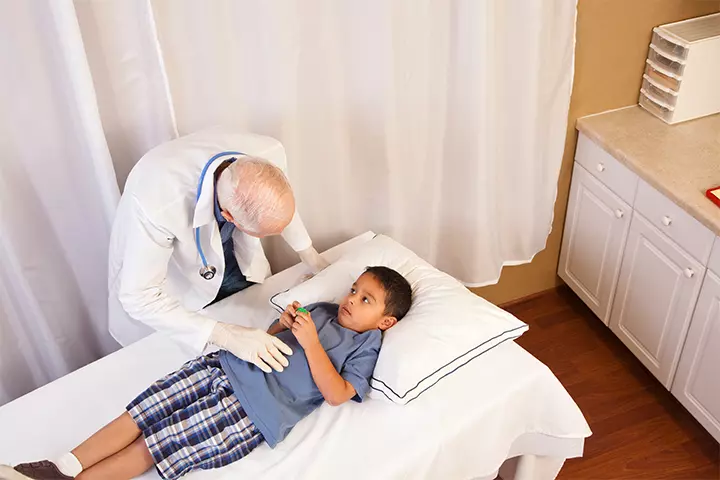
- Nutritional deficiencies and metabolic problems: A deficiency in nutrients, like folic acid and vitamin B12, which may have been caused by malnutrition, could also lead to hypotension. Problems in the endocrine system (glands that secrete hormones) may also be a reason (1) (17).
- Physical stress: Standing or sitting for too long, prolonged exposure to the sun during summer, intense exercise, and emotionally stressful events might also trigger low blood pressure.
- Addison’s Disease: Addison’s disease is caused due to damage of the adrenal glands which results in reduced secretion of the hormone cortisol. With adrenal insufficiency, the body is not able to increase the amount of cortisol which leads to an Addisonian crisis that results in low blood pressure (18).
- Hypovolemia: This is a condition that causes a reduction in blood circulation and in extreme cases, arterial hypotension (19).
- Pulmonary Embolism: This is a condition in which a blood clot originates in a large vein, mostly in the legs, and moves to the lungs, causing difficulty in breathing and low blood pressure (20).
- Hypoglycemia: This condition occurs when the body experiences abnormally low levels of blood sugar or glucose, often resulting from diabetes. This can trigger an elevated heart rate in children and a decrease in central blood pressure (21).
- Hyperthyroidism: The regulation of blood pressure may be impacted by an overabundance of thyroid hormone, leading to the relaxation of blood vessels and a decrease in diastolic blood pressure (22).
- Cancer: It is seen that cancer treatments like chemotherapy or certain biological drugs can cause low blood pressure (23).
Some research has suggested that low blood pressure might also be caused by certain genetic disorders too. However, sometimes it is difficult to figure out that the blood pressure of the child is low. But knowing the symptoms may help.
 Did you know?
Did you know?Certain prescription medications, alcohol, recreational drugs, and extreme temperatures can also trigger hypotension in kids (10).
Signs And Symptoms Of Low Blood Pressure In Children

Fainting or dizziness in children is a common symptom of low blood pressure. Some other symptoms a child with low blood pressure may experience include (1).
- Dizziness or fainting
- Tiredness
- Nausea
- Difficulty to focus
- Blurred vision
- Feeling sick
- Breathing difficulties
Some children show mild symptoms, like headaches and chronic fatigue, which may or may not indicate a fall in blood pressure. However, if these symptoms persist, take your child to a doctor, as untreated hypotension can lead to long-term health issues.
Diagnosis Of Low Blood Pressure In Children
A doctor will use the following steps to diagnose low blood pressure (24).
- Assessment of symptoms: The doctor will check symptoms related to low blood pressure and may ask parents about any existing medical problems in the child.
- Auscultatory blood pressure measurement: The doctor uses a manual or digital sphygmomanometer, which is a blood pressure measurement machine, to check the blood pressure of the child.
- Pulse determination: Fingers are placed on an artery to feel the pulse. It helps in knowing the number of heartbeats per second.
- ECG: If some anomalies are detected, then the doctor might suggest further checkup of the heart with an ECG machine.
Treatment For Low Blood Pressure In Children
If your child’s blood pressure is lower than usual but doesn’t cause symptoms, they likely don’t need treatment. However, if they do have symptoms, treatment will depend on the cause. While mild hypotension may resolve with lifestyle adjustments, persistent or severe hypotension requires medical evaluation to ensure the child’s well-being.
- If the blood pressure has dropped due to any medical condition such as heart disease or infections or allergies, then the doctor may prescribe medications for it (25) (26).
- Some medications can cause a drop in blood pressure as a side effect (15). In such cases, medications may be changed as per the symptoms and medical needs of the child.
- In severe cases like shock, emergency care is required, which may include IV fluids, blood transfusion, medications to raise blood pressure, or antibiotics (15).
Low blood pressure in children is often manageable at home due to physical stress, dehydration, or poor diet.
Home Care Tips For Children With Low Blood Pressure
A home care routine can help make low blood pressure manageable and may even help restore normal blood pressure (27).
- Food that contains sodium could help in maintaining the blood pressure. Savory snacks, cured meats, cheese, chicken, soups, and bread have sodium content (28) . You may speak to a pediatrician or a pediatric dietician to know about the right quantity of sodium your child needs at their age.
 Point to consider
Point to consider- A well-balanced diet is essential to maintaining blood pressure. Include vegetables, fruits, and nuts in your daily diet. Fruits and vegetables high in water content can help maintain hydration. Foods rich in folic acid and vitamin B12 should also be included in regular meals.

- Drinking adequate water can help prevent dehydration, which is one of the causes for low blood pressure in children.
- Tell your child to slow down the pace of any strenuous physical activity. The child must avoid standing or sitting for too long, especially in warm outdoors.
- Compression stockings can help maintain optimum blood pressure in the upper body and prevent blood from pooling in the legs. Speak to the child’s doctor about the use of stockings for your child.
Infographic: Measuring Blood Pressure At Home
While trying to manage your child’s blood pressure (BP), the first thing to do is study their numbers. Fortunately, this doesn’t require you to visit a clinic frequently. A one-time investment in a reliable BP apparatus and some training regarding its operation will do.
Let us help you study your child’s BP number. Here is a handy infographic discussing the steps of measuring blood pressure at home. Illustration: Momjunction Design Team
Frequently Asked Questions
1. Can a lack of sleep in children cause low blood pressure?
Studies show that a lack of sleep due to insomnia and poor sleep quality may be linked to increased blood pressure. Therefore, it is important to ensure your children are sleeping adequately every day (30).
2. Is milk a good option for lowering blood pressure among children?
Milk is rich in potassium and is associated with lowering blood pressure. Studies show that high intake of potassium may also prevent hypertension (31).
3. What should be done in case of a sudden drop in blood pressure in a child?
Pediatrician and neonatologist Dr. Neema Shrestha suggests, “Take the child to a safe place, lay them down, and lift their legs above the head for a few minutes. This will help all the pooled blood to return to the heart, increasing the blood pressure. Once the child has regained consciousness and can sit up, fluids may be given to the child. The child should then be taken to the hospital for further assessment of the cause of hypotension.”
4. What are the long-term effects of low blood pressure in children?
When low blood pressure occurs without symptoms, it is generally harmless and shouldn’t significantly affect a child’s life. However, if symptoms like dizziness or fainting are present, which is more common in adults than children, complications from underlying causes can arise. These may involve falls and injuries, organ damage or shock from reduced blood flow, and heart issues or stroke resulting from the heart’s compensatory mechanisms (10).
5. Can low blood pressure in children affect their academic performance?
Low blood pressure in children may impact their school performance, as persistently low blood pressure has been associated with cognitive problems, especially in attention and memory. This reduced brain function may be caused by decreased brain activity in the cortex and poor blood flow regulation in the cerebrum (32).
6. Can children outgrow low blood pressure?
Yes, children may outgrow certain types of low blood pressure conditions, such as neurally mediated hypotension. This condition, primarily impacting children, usually resolves during adulthood. It occurs when a child’s blood pressure drops after standing for prolonged periods (15) .
7. How often should a child’s blood pressure be checked?
A child’s blood pressure should be checked annually during routine check-ups (33). However, the frequency may vary based on their health and risk factors. It’s advisable to seek personalized guidance from a healthcare professional.
Fainting, fatigue, nausea, or blurred vision may indicate low blood pressure in children. Various infections, allergies, stress, dehydration, injuries, or nutritional deficiencies may cause a drop in blood pressure. Hypotension may occur due to prolonged standing posture or as a result of an autonomic malfunction in the body. The condition is manageable at home by making dietary changes and reducing physical stress on the child. However, consult a pediatrician if the condition persists and speak to a pediatric dietician to ensure you include the right ingredients in your child’s diet.
Illustration: Low Blood Pressure In Children: Causes Symptoms & Treatment
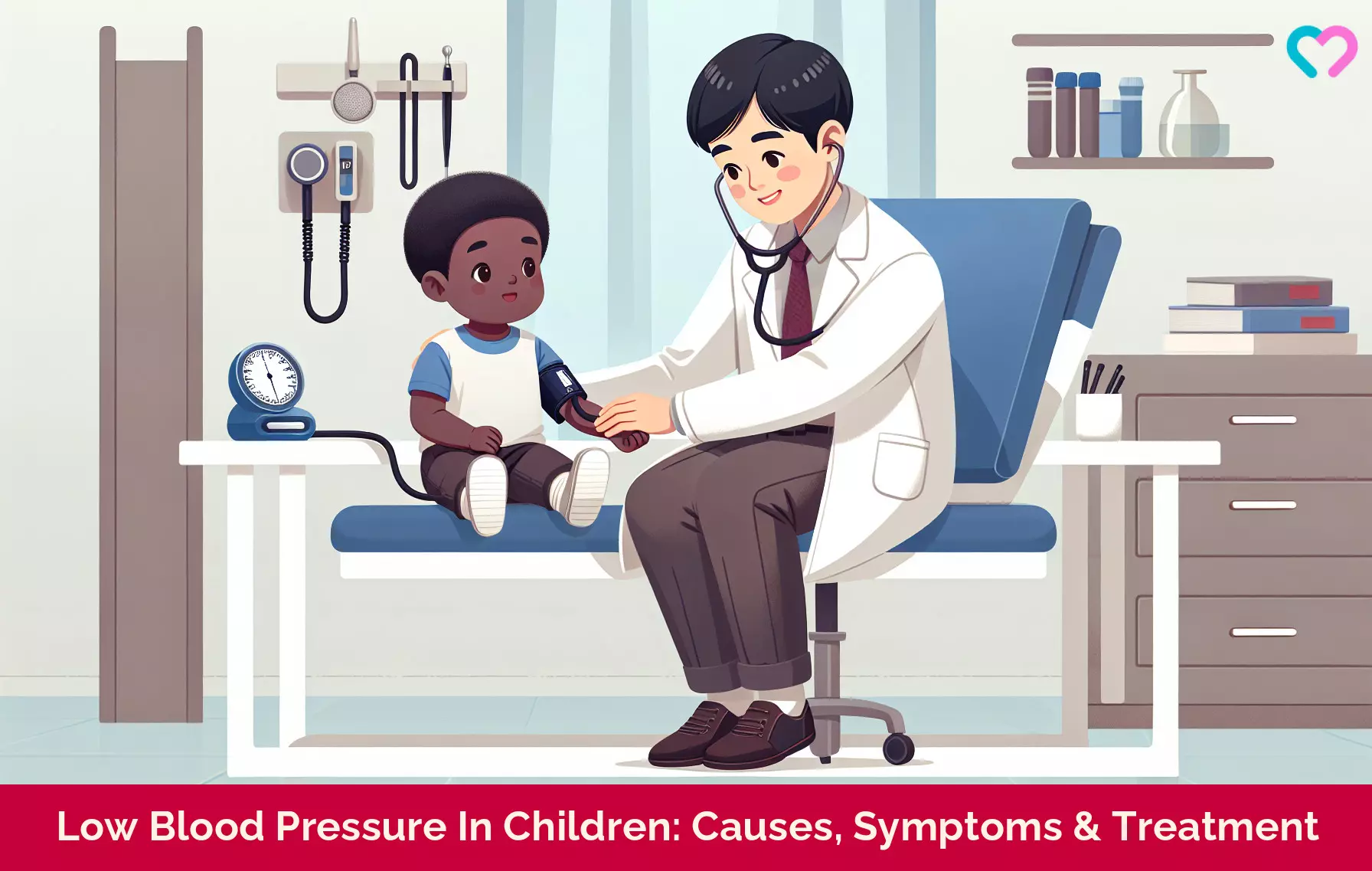
Image: Stable Diffusion/MomJunction Design Team
References
- Low Blood Pressure (Hypotension) in Children.
https://www.nicklauschildrens.org/conditions/low-blood-pressure - Ashish Banker et.al; (2016); Blood pressure percentile charts to identify high or low blood pressure in children.
https://pmc.ncbi.nlm.nih.gov/articles/PMC4950817/#:~:text=Multiple%20pediatric%20critical%20care%20guidelines - Julian M. Stewart et.al; (2018); Pediatric Disorders of Orthostatic Intolerance.
https://publications.aap.org/pediatrics/article-abstract/141/1/e20171673/37679/Pediatric-Disorders-of-Orthostatic-Intolerance?redirectedFrom=fulltext - Neurally Mediated Hypotension And Its Treatment.
https://www.njcfsa.org/wp-content/uploads/2010/08/4-11-Patient-Unofrmationon-Neurally-Mediated-Hypotension-and-its-Treatment.pdf - Munir Zaqqa and Ali Massumi; (2000); Neurally Mediated Syncope.
https://pmc.ncbi.nlm.nih.gov/articles/PMC101078/ - Neurally Mediated Syncope.
https://www.vumc.org/autonomic-dysfunction-center/neurally-mediated-syncope - Low blood pressure.
https://ufhealth.org/conditions-and-treatments/low-blood-pressure - The Link Between Dehydration and Blood Pressure.
https://health.clevelandclinic.org/dehydration-and-blood-pressure - Food Allergies in Children.
https://www.urmc.rochester.edu/encyclopedia/content?contenttypeid=90&contentid=P01685 - Low Blood Pressure (Hypotension).
https://my.clevelandclinic.org/health/diseases/21156-low-blood-pressure-hypotension - Anemia in women and children.
https://www.paho.org/en/enlace/anemia-women-and-children#:~:text=Anemia%20in%20children%20aged%206%20to%2059%20months&text=Across%20countries%20of%20the%20Americas%2C%20the%20prevalence%20of%20anemia%20in - Iron Deficiency Anemia in Children.
https://www.intechopen.com/chapters/56773 - 2021 Heart Disease & Stroke Statistical Update Fact Sheet -Congenital Cardiovascular Defects.
https://professional.heart.org/-/media/PHD-Files-2/Science-News/2/2021-Heart-and-Stroke-Stat-Update/2021_Stat_Update_factsheet_Congenital_Cardiovascular_Defects.pdf - Heart Failure in Children and Adolescents.
https://www.heart.org/en/health-topics/heart-failure/what-is-heart-failure/heart-failure-in-children-and-adolescents - Low Blood Pressure.
https://www.pennmedicine.org/for-patients-and-visitors/patient-information/conditions-treated-a-to-z/low-blood-pressure - Recognizing Internal Injuries in Young Athletes.
https://www.stanfordchildrens.org/en/topic/default?id=recognizing-internal-injuries-in-young-athletes-160-43 - Low Blood Pressure – When Blood Pressure Is Too Low.
https://www.heart.org/en/health-topics/high-blood-pressure/the-facts-about-high-blood-pressure/low-blood-pressure-when-blood-pressure-is-too-low - Addison’s Disease.
https://www.mayoclinic.org/diseases-conditions/addisons-disease/symptoms-causes/syc-20350293#:~:text=With%20adrenal%20insufficiency%2C%20not%20being - Uwe Kreimeier; (2000); Pathophysiology of fluid imbalance.
https://pmc.ncbi.nlm.nih.gov/articles/PMC3226173/#:~:text=The%20consequences%20of%20hypovolemia%20include - Difficulty breathing? It may be due to a blood clot, or pulmonary embolism.
https://www.uchicagomedicine.org/forefront/heart-and-vascular-articles/what-is-pulmonary-embolism - Brian M. Frier et.al; (2011); Hypoglycemia and Cardiovascular Risks.
https://diabetesjournals.org/care/article/34/Supplement_2/S132/28705/Hypoglycemia-and-Cardiovascular-Risks - Hyperthyroidism and your heart.
https://www.health.harvard.edu/healthbeat/hyperthyroidism-and-your-heart#:~:text=In%20hyperthyroidism%2C%20blood%20vessels%20relax - Low Blood Pressure (Hypotension).
https://www.breastcancer.org/treatment-side-effects/low-blood-pressure - Ciro Corrado; (2015); Blood pressure measurement in children.
https://pmc.ncbi.nlm.nih.gov/articles/PMC4707609/ - Low Blood Pressure.
https://www.narayanahealth.org/diseases/low-blood-pressure - Low Blood Pressure (Hypotension).
https://www.uofmhealth.org/health-library/abg6277 - 5 tips to try if you have low blood pressure.
https://www.bhf.org.uk/informationsupport/heart-matters-magazine/medical/how-to-treat-low-blood-pressure - Salt and Sodium.
https://nutritionsource.hsph.harvard.edu/salt-and-sodium/ - Best Home Remedies for Low Blood Pressure.
https://www.narayanahealth.org/blog/best-home-remedies-for-low-blood-pressure - About Sleep and Your Heart Health.
https://www.cdc.gov/heart-disease/about/sleep-and-heart-health.html - Mary M McGrane et.al; (2012); Dairy Consumption, Blood Pressure, and Risk of Hypertension: An Evidence-Based Review of Recent Literature.
https://pmc.ncbi.nlm.nih.gov/articles/PMC3289141/#:~:text=Milk%20provides%20approximately%20350%20mg,the%20JNC%207%20%5B6%5D. - Stefan Duschek and Rainer Schandry; (2006); Reduced brain perfusion and cognitive performance due to constitutional hypotension.
https://pmc.ncbi.nlm.nih.gov/articles/PMC1858602/ - High blood pressure in kids.
https://www.childrens.com/health-wellness/high-blood-pressure-and-kids
Community Experiences
Join the conversation and become a part of our nurturing community! Share your stories, experiences, and insights to connect with fellow parents.
Read full bio of Dr. Richard Mario Lurshay
- Dr. Neema Shrestha is a pediatrician with a special interest in the field of neonatology. She completed her graduation in medicine at Kasturba Medical College, Diploma in Child Health at D.Y. Patil University, post graduation in Pediatrics at Nepal Medical College and Fellowship in Neonatology at Sir Ganga Ram Hospital, New Delhi. Dr. Shrestha has an overall experience of five years and currently works at NICU in Grande International Hospital, Kathmandu, Nepal.
 Dr. Neema Shrestha is a pediatrician with a special interest in the field of neonatology. She completed her graduation in medicine at Kasturba Medical College, Diploma in Child Health at D.Y. Patil University, post graduation in Pediatrics at Nepal Medical College and Fellowship in Neonatology at Sir Ganga Ram Hospital, New Delhi. Dr. Shrestha has an overall experience of five years and currently works at NICU in Grande International Hospital, Kathmandu, Nepal.
Dr. Neema Shrestha is a pediatrician with a special interest in the field of neonatology. She completed her graduation in medicine at Kasturba Medical College, Diploma in Child Health at D.Y. Patil University, post graduation in Pediatrics at Nepal Medical College and Fellowship in Neonatology at Sir Ganga Ram Hospital, New Delhi. Dr. Shrestha has an overall experience of five years and currently works at NICU in Grande International Hospital, Kathmandu, Nepal.
Read full bio of Dr Bisny T. Joseph
Read full bio of Swati Patwal
Read full bio of Anindita Ghatak










